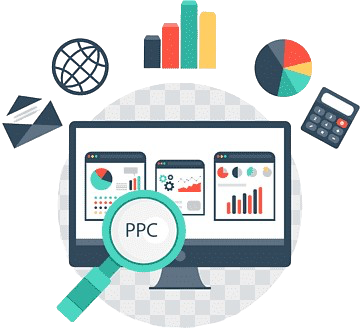PPC Services

Pay-Per-Click (PPC) Advertising: A Comprehensive Guide
Pay-Per-Click (PPC) advertising has transformed the way businesses market their products and services online. It is one of the most effective digital marketing strategies for driving traffic, generating leads, and boosting sales. By allowing businesses to display ads to a highly targeted audience and only charging them when users click on their ads, PPC ensures cost-effectiveness and measurable results. In this article, we will explore PPC in detail, including its workings, benefits, strategies, and tips to maximize success.
What is PPC Advertising
PPC is an online advertising model where advertisers pay a fee each time their ad is clicked. Unlike traditional advertising methods, PPC ensures that businesses only pay for actual user engagement. These ads can appear on search engines like Google and Bing, as well as on social media platforms, websites, and apps.

Platforms for PPC Advertising
-
Google Ads: The most popular PPC platform, Google Ads allows businesses to display ads on Google’s search engine, Display Network, YouTube, and more.
-
Microsoft Ads: Previously Bing Ads, this platform provides PPC opportunities on Bing and Yahoo.
-
Social Media Platforms:
- Facebook Ads: Offers targeted ads based on demographics, interests, and behaviors.
- Instagram Ads: Leverages Instagram’s visual platform for PPC campaigns.
- LinkedIn Ads: Ideal for B2B businesses targeting professionals.
- Twitter Ads and TikTok Ads: Cater to specific audience demographics with PPC option
-
E-Commerce Platforms:
- Amazon Ads: Tailored for sellers looking to promote their products directly on Amazon.
- Etsy Ads: Helps Etsy sellers gain visibility
- Native Advertising Networks: Platforms like Taboola and Outbrain offer PPC opportunities in the form of sponsored content on websites
How to Create a Successful PPC Campaign
Define Your Goals: Clearly outline the objectives of your campaign. For example:
- Increase website traffic
- Generate leads
- Drive e-commerce sales
- Promote a new product
Conduct Keyword Research: Use tools like Google Keyword Planner, SEMrush, or Ahrefs to identify relevant keywords. Focus on:
- High-intent keywords (e.g., “buy running shoes”)
- Long-tail keywords (e.g., “affordable running shoes for men”)
- Negative keywords to exclude irrelevant searches.
Craft Compelling Ads:
- Write attention-grabbing headlines.
- Highlight key benefits or unique selling points (USPs).
- Include a strong call-to-action (CTA), such as “Shop Now” or “Learn More.”
est and Optimize:
- Perform A/B testing on ad copy, visuals, and CTAs.
- Monitor metrics like CTR, cost per click (CPC), and conversion rate.
- Adjust bids and targeting to improve performance.
